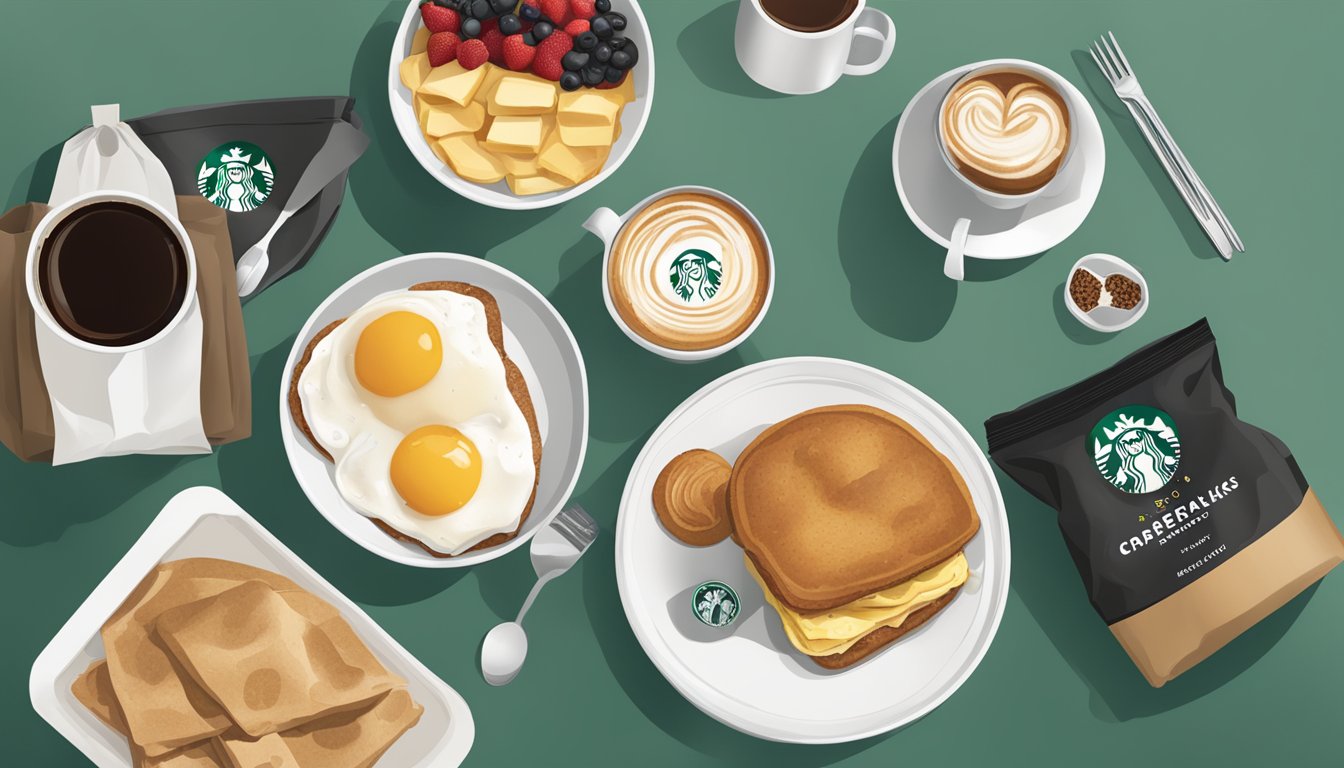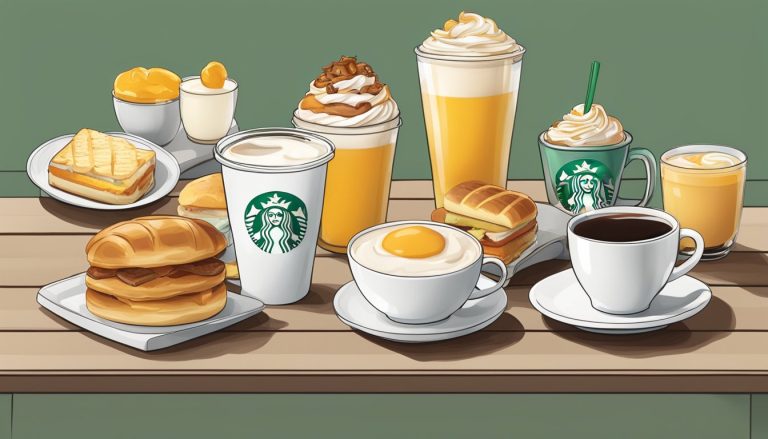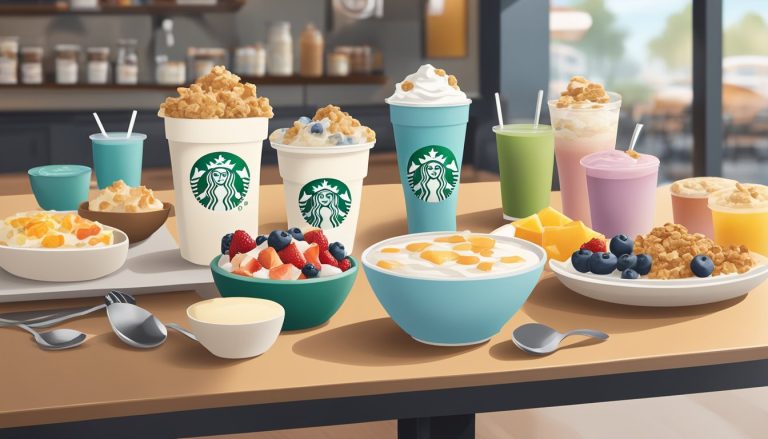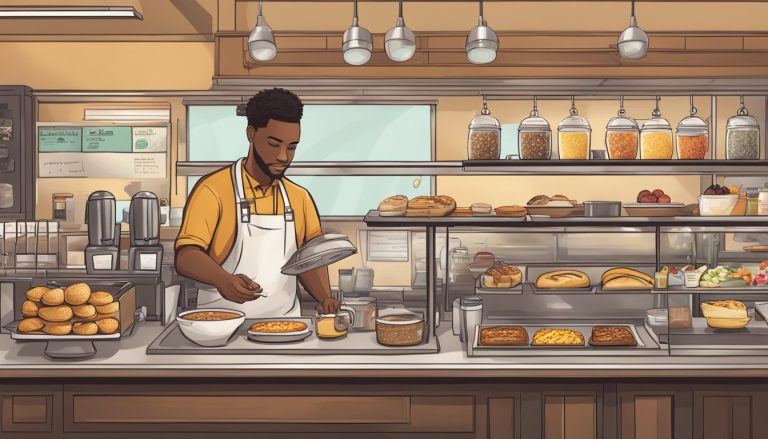Starbucks has revolutionized the coffee industry not only through its beverages but also through its packaging design. From humble beginnings with simple paper bags and stamps, the company has evolved to create visually striking and informative packaging for its coffee products. This evolution reflects Starbucks’ commitment to storytelling and brand identity.
Starbucks’ Breakfast Blend, introduced in 1998, exemplifies the company’s innovative approach to packaging and product development. As part of the “Milder Dimensions” lineup, Breakfast Blend’s packaging has undergone several iterations, each paying homage to its unique history. The current design incorporates hidden words and images that reference the coffee’s story, engaging customers and creating a deeper connection with the product.
The shift from plain bags to colorful, printed packaging began in 1995 with Blue Note Blend. This marked a significant turning point in Starbucks’ visual branding strategy. Today, Starbucks’ coffee bags are not merely functional containers but serve as canvases for artistic expression and brand storytelling, elevating the customer experience from purchase to consumption.
History of Starbucks
Starbucks transformed from a local Seattle coffee shop to a global coffee empire. Its journey intertwines with the rise of specialty coffee culture and Italian-inspired coffeehouse experiences in America.
Italian-Style Coffeehouse Influence
Howard Schultz’s 1983 trip to Milan sparked Starbucks’ evolution. He witnessed the vibrant espresso bar culture and community gathering spaces. This inspired Schultz to reimagine Starbucks beyond just selling coffee beans.
In 1984, Schultz convinced Starbucks’ founders to test a coffeehouse concept in Seattle. They served their first caffè latte, blending Italian tradition with American tastes. This experiment laid the foundation for Starbucks’ future direction.
Schultz founded Il Giornale in 1985, serving brewed coffee and espresso drinks using Starbucks beans. This venture proved the viability of the Italian-style coffeehouse model in the U.S. market.
Rise of the Whole-Bean Coffee Market
Starbucks began as a whole-bean coffee retailer in 1971. The company focused on sourcing high-quality Arabica beans and perfecting their roasting techniques. This commitment to quality set them apart in the emerging specialty coffee market.
As consumer interest in gourmet coffee grew, Starbucks expanded its retail presence. They educated customers about different coffee varieties and brewing methods. This approach helped cultivate a more discerning coffee consumer base.
Starbucks’ success in whole-bean sales provided the financial foundation for its coffeehouse expansion. The company maintained its focus on bean quality even as it shifted towards prepared beverages.
The Evolution of Coffee Packaging

Coffee packaging has transformed dramatically over the years, reflecting changes in technology, consumer preferences, and brand identities. Starbucks has been at the forefront of this evolution, using packaging to tell stories and showcase their commitment to quality and sustainability.
Storytelling Through Packaging
Starbucks’ coffee packaging journey began with simple paper bags and rubber stamps. As the brand grew, so did its packaging sophistication. In 1995, Blue Note Blend marked a turning point with colorful graphics printed directly on the package. This shift allowed Starbucks to communicate more effectively with customers through visual storytelling.
The company’s packaging now features intricate designs that highlight the coffee’s origin, flavor profile, and roast level. Each package tells a unique story, from the farmers who grew the beans to the roasters who crafted the final product.
Starbucks uses packaging to educate consumers about their ethical sourcing practices and sustainability efforts. This approach helps build trust and loyalty among customers who value transparency and responsible business practices.
Visual Storytelling and Brand Identity
Starbucks’ packaging design has become an integral part of its brand identity. The iconic green logo and carefully chosen color palettes create instant recognition on store shelves.
The company’s visual approach extends beyond aesthetics. Each package element serves a purpose in conveying information about the coffee inside. Tasting notes, origin stories, and brewing recommendations are strategically placed to guide customers through their coffee experience.
Starbucks frequently updates its packaging designs to keep the brand fresh and relevant. These changes reflect broader cultural trends while maintaining a consistent visual language that customers associate with quality and expertise.
The Roast Spectrum Design
In 2011, Starbucks introduced a revolutionary packaging design centered around the roast spectrum. This system uses color coding to help customers quickly identify their preferred roast level:
- Blonde Roast: Light yellow
- Medium Roast: Rich orange
- Dark Roast: Deep purple
The roast spectrum design simplifies the selection process for customers while showcasing Starbucks’ range of offerings. It also serves as an educational tool, helping coffee drinkers understand the relationship between roast level and flavor profile.
This innovative approach has influenced packaging trends throughout the coffee industry, demonstrating Starbucks’ role as a market leader and trendsetter.
Innovations in Sustainability
Starbucks has made significant strides in developing more environmentally friendly packaging solutions. The company has set ambitious goals to reduce waste and increase recyclability.
Recent innovations include:
- Compostable and recyclable coffee bags
- Reusable cup programs to reduce single-use waste
- Plant-based liners for paper cups
Starbucks continues to invest in research and development to find new ways to minimize its packaging footprint. The company collaborates with suppliers, environmental organizations, and local governments to create more sustainable packaging solutions.
These efforts not only benefit the environment but also resonate with eco-conscious consumers who prioritize sustainability in their purchasing decisions.
Starbucks’ Breakfast Offerings

Starbucks has expanded its menu to include a variety of breakfast options beyond coffee. The company carefully pairs food items with its signature blends, creating complementary flavor profiles. Over time, Starbucks has continually evolved its breakfast menu to meet changing customer preferences.
Expanding Beyond Coffee
Starbucks introduced oatmeal as a nutritious breakfast option in 2008. This marked a significant shift towards offering more substantial morning meals. The company later added egg sandwiches, wraps, and protein boxes to cater to customers seeking heartier options.
Starbucks also ventured into healthier territory with the acquisition of Evolution Fresh in 2011. This move brought cold-pressed juices and smoothies to the menu, appealing to health-conscious consumers.
In recent years, plant-based alternatives have gained prominence. Starbucks now offers oat milk and almond milk as dairy substitutes, along with vegetarian breakfast sandwiches.
Tasting Notes and Food Pairings
Starbucks expertly pairs its breakfast items with specific coffee blends to enhance the overall flavor experience. The Breakfast Blend, known for its lighter profile, complements sweeter pastries and fruit-based items.
For heartier breakfast sandwiches, Starbucks recommends bolder roasts like Pike Place or Italian Roast. These coffees stand up well to savory flavors and help cut through richer ingredients.
Starbucks baristas are trained to suggest ideal pairings, helping customers create a balanced breakfast experience. This attention to flavor profiles elevates the morning routine beyond simple sustenance.
Breakfast Menu Evolution
Starbucks’ breakfast menu has undergone significant changes since its inception. Initially focused on pastries and muffins, the offerings now include a diverse range of hot and cold options.
The introduction of sous vide egg bites in 2017 catered to low-carb and protein-focused diets. Seasonal offerings, like pumpkin bread in fall, keep the menu fresh and exciting throughout the year.
Starbucks has also adapted to local tastes in its global expansion. In China, for example, the company offers congee and tea eggs alongside Western-style breakfast items.
As dietary trends shift, Starbucks continues to innovate. Recent additions include more whole-grain options and reduced-sugar alternatives to meet growing health concerns.
To-Go Packaging Trends

Starbucks has pioneered innovative packaging solutions to enhance convenience while reducing environmental impact. These initiatives focus on reusable options, lid redesigns, and global testing of new cup technologies.
Rise of Reusable Packaging
Starbucks encourages customers to bring personal cups through discounts and promotional programs. The company introduced a Circular Cup program, allowing customers to borrow reusable cups for a small deposit. This initiative aims to reduce single-use cup waste significantly.
In select markets, Starbucks offers durable, reusable cold cups with interchangeable lids and straws. These products are designed for repeated use, aligning with sustainability goals.
The company also partnered with recycling organizations to ensure proper disposal and recycling of their packaging materials.
The Shift to Strawless Lids
In 2018, Starbucks unveiled a redesigned cold cup lid, eliminating the need for plastic straws. This innovation reduces plastic waste while maintaining drink enjoyment.
The new lid features a raised lip and domed top, allowing easy sipping of cold beverages. It’s made from polypropylene, a widely recyclable plastic.
Starbucks has committed to phasing out plastic straws in all stores globally. For drinks that require straws, the company offers alternatives made from paper or compostable materials.
Global Cup Trials
Starbucks conducts extensive trials of new cup technologies worldwide. In 2018, the company launched a cup trial at London’s Gatwick Airport, testing reusable cups to reduce waste.
The NextGen Cup Challenge, co-founded by Starbucks, seeks innovative cup designs that are recyclable and compostable. Winning designs undergo real-world testing in select markets.
Starbucks is exploring bio-based liners for paper cups to enhance recyclability. The company also tests cups made from recycled materials to close the loop on packaging waste.
Starbucks’ Sustainability Initiatives

Starbucks has launched ambitious programs to reduce waste and improve the sustainability of its packaging. The company is investing in innovative cup designs and recycling infrastructure to minimize its environmental impact.
The NextGen Cup Challenge
Starbucks co-founded the NextGen Cup Challenge in 2018 to develop more sustainable cup solutions. This global innovation competition brought together entrepreneurs, engineers, and designers to create recyclable and compostable cup technologies.
Winning ideas included:
• Plant-based liners to replace plastic
• Reusable cup systems with digital tracking
• Cups made from agricultural waste materials
Starbucks has been testing and implementing some of these designs in select markets. The company aims to have fully recyclable or compostable cups available globally by 2030.
The Starbucks Cup Fund
In 2019, Starbucks established a $10 million Cup Fund to boost paper cup recycling. The fund provides grants to recycling facilities and municipalities to improve cup collection and processing capabilities.
Key initiatives include:
• Upgrading recycling equipment
• Expanding curbside cup recycling programs
• Developing new end markets for recycled cup materials
The Cup Fund has already increased recycling access for over 10 million cups annually. Starbucks continues to invest in recycling infrastructure to create a circular economy for its packaging.
Design and Packaging Innovations

Starbucks has revolutionized coffee packaging through creative design and visual storytelling. The company’s approach combines brand consistency with artistic flair to create memorable and functional packaging.
Colorful Graphics and Brand Consistency
In 1995, Starbucks introduced its Blue Note Blend, marking a significant shift in coffee packaging design. This product moved away from plain bags to vibrant, colorful graphics printed directly on the packaging. The new “rollstock” packages transformed coffee bags into eye-catching works of art.
Starbucks’ design strategy evolved to maintain brand consistency while allowing for creative expression. Each coffee blend now features unique artwork that reflects its flavor profile and origin story. This visual approach helps customers quickly identify their preferred roasts on store shelves.
The company also incorporates sustainable materials into its packaging design. Recyclable and compostable components are used for coffee bags and cup sleeves, aligning with Starbucks’ commitment to environmental responsibility.
Stamps: A Story in Every Cup
Before adopting colorful graphics, Starbucks used stamps to adorn its packaging. These stamps appeared on traditional paper bags and later on more technologically advanced packaging designed to preserve coffee freshness.
The stamp designs told stories about each coffee blend’s origin, roast level, and flavor notes. This visual storytelling approach created a connection between customers and the product, enhancing the overall coffee experience.
Stamps continue to play a role in Starbucks’ design language, appearing on cups and other merchandise. They serve as a nod to the company’s heritage and reinforce its commitment to quality and craftsmanship in every cup of coffee served.
Partnerships and Collaborations

Starbucks has forged strategic alliances to enhance its offerings and customer experience. These partnerships span music, technology, and food industries, creating unique products and services for coffee lovers.
Blue Note Blend and Music Collaborations
Starbucks’ partnership with Blue Note Records resulted in the creation of the Blue Note Blend. This smooth, medium-roast coffee pays homage to the legendary jazz label. The collaboration extends beyond the coffee itself, with Starbucks stores featuring Blue Note playlists and album artwork.
Starbucks has also partnered with Spotify to curate in-store music experiences. Customers can influence the soundtrack of their local Starbucks through the Spotify app. This integration allows patrons to discover and save songs they hear while enjoying their coffee.
These music partnerships demonstrate Starbucks’ commitment to creating a multisensory experience for its customers. By combining carefully crafted coffee with curated soundtracks, Starbucks elevates the simple act of grabbing a cup of coffee into a more engaging and memorable event.




